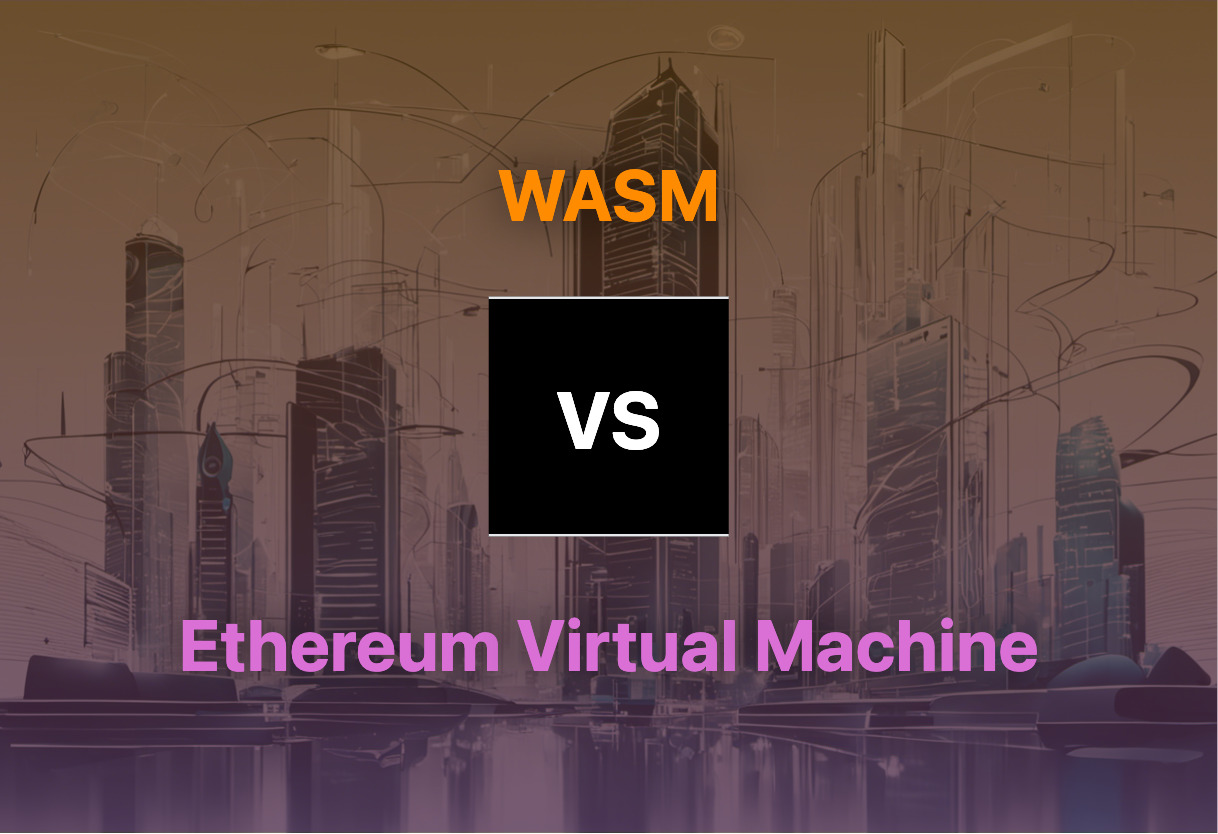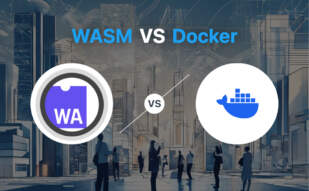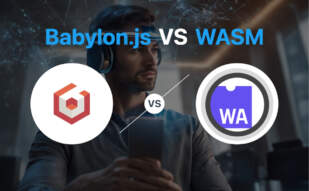For developers seeking to build robust web and edge applications, WebAssembly (WASM) is the ideal choice due to its universal compatibility, high performance, and security features. Conversely, those focused on blockchain-enabled applications should select the Ethereum Virtual Machine (EVM) for its specialized smart contract functionality.

Key Differences Between WebAssembly and Ethereum Virtual Machine
- WebAssembly aids in creating high-performance web and edge applications, while Ethereum Virtual Machine is specifically designed to execute smart contracts in Ethereum.
- WebAssembly supports a broader range of languages (C, C++, Rust, and Go) and works alongside JavaScript, while Ethereum Virtual Machine’s use cases lean heavily towards blockchain-related applications.
- EVM’s unique capability lies in running untrusted code without risking data and achieving deterministic processing. WebAssembly, however, enhances application security by reducing the attack surface and providing better memory safety.
- Ethereum Virtual Machine remains within the Ethereum network, while WebAssembly extends beyond browsers, compatible across different containers, Kubernetes clusters, devices, and multicloud environments.
| Comparison | WebAssembly | Ethereum Virtual Machine |
|---|---|---|
| Initial Release | 2017 | 2015 |
| Standardization | W3C standard by 2019 | Part of Ethereum Protocol |
| Support | Supported by all major browsers | Part of Ethereum network |
| Performance | Enables near-native speed | Run untrusted code without risking data |
| Applications | 3D games, virtual/augmented reality, video editing, P2P services, scientific simulations | Smart contract functionalities |
| Security | Reduced vulnerability attack surface, better memory safety, obscure code, sandbox environment | Secure operation of continuous, immutable state machine |
| Languages Supported | C, C++, Rust, Go | Various, Turing-complete |
| Compatibility | Can work alongside JavaScript and other languages | Compatible with Ethereum Accounts and Smart Contracts |
| Future Prospects | Could become new standard for composing apps consisting of truly universal building blocks | Possible shift from EVM to Ethereum WebAssembly (eWASM) |
What Is WebAssembly and Who’s It For?
WebAssembly, also known as WASM, is a high-performance binary format that has been standard since 2019, backed by all major browsers. Its applications are broad, encompassing video editing, 3D games, AR/VR, P2P services, scientific simulations, and more. This technology is indispensable for developers who prioritize speed, efficiency, portability, readability, and security in their web apps. An impressive feat of WebAssembly is its ability to run code written in a variety of languages on the web at near-native speed, making it a key tool for developers using languages like C, C++, Rust, Go, and Python.

Pros of WebAssembly
- Major performance gains
- Supports multiple programming languages, including C, C++, Rust, Python, and Go
- Enhances developer productivity
- Potential for serverless adoption
- Better memory management reduces vulnerability attack surface
Cons of WebAssembly
- Low-level binary format may present a learning curve
- Limited set of instructions
What Is Ethereum Virtual Machine and Who’s It For?
Ethereum Virtual Machine (EVM) is the runtime environment for smart contracts within Ethereum. It serves as an uninterrupted, immutable operational protocol of the state machine. This technology is essential for developers tasked with handling advanced blockchain projects and those who wish to write smart contracts or create DApps. It’s a Turing-complete system, enabling the execution of programs coded in various languages.

Pros of Ethereum Virtual Machine
- Provides environment for all Ethereum accounts
- Manages native ETH token
- Ensures correct execution of transactions and smart contracts
- Potential for creating DApps
Cons of Ethereum Virtual Machine
- High storage costs
- High gas costs
- Technical expertise requirement for writing smart contracts
Code Examples for WASM & Ethereum Virtual Machine
WASM – Compression/Decompression using LZMA
In this WASM example, we’ll create a small app, which can be used to compress/decompress strings using LZMA algorithm. It requires WASM compatible browser, and LZMA SDK for WASM.
Module['onRuntimeInitialized'] = function() {
compress("Hello, World!");
};
function compress(input) {
var output = LZMA.compress(input, 9);
var result = encode(output);
console.log(result);
}
function decompress(input) {
var decoded = decode(input);
var output = LZMA.decompress(decoded);
console.log(output);
}
function encode(data) {
var str = '';
for (var i = 0, len = data.length; i < len; i++) {
str += String.fromCharCode(data[i]);
}
return str;
}
function decode(str) {
var data = [];
for (var i = 0, len = str.length; i < len; i++) {
data.push(str.charCodeAt(i));
}
return data;
}Ethereum Virtual Machine – Simple smart contract to manage Users
This Ethereum VM code is a simple Smart Contract to manage Users, their names and ids. It requires knowledge of Solidity and a configured Ethereum node to interact with.
pragma solidity >=0.4.16 <0.9.0;
contract UserManager {
struct User {
string id;
string name;
}
User[] public users;
function addUser(string memory _name, string memory _id) public {
users.push(User(_name, _id));
}
function getUser(uint index) public view returns (string memory name, string memory id) {
User memory user = users[index];
return (user.name, user.id);
}
}WASM vs Ethereum Virtual Machine: Your Decisive Verdict
In the battle between WASM and Ethereum Virtual Machine (EVM), the decisive victor depends on your personal prerogative. Here’s why.
For AR/VR Creators
Given WASM’s versatile performance efficacy and extensive applications, it is the ideal choice for those operating in the AR/VR spectrum. Its low-level binary format and high-speed delivery are major perks.

Web Developers
EVM offers a robust platform for smart contract functionality and blockchain integration, making it a prime choice for web developers vested in blockchain applications.

Serverless Environments
In the realm of serverless environments, WASM shines with its potential to resolve adoption issues and provide high-performance functions. WASM’s ability to run across different containers and environments is unmatched.

In the showdown of WASM vs Ethereum Virtual Machine, WASM reigns supreme for AR/VR creators and serverless environments, primarily due to its speed, efficiency, and wide-ranging applicability. However, EVM holds the high ground for web developers, courtesy of its smart contract functionalities and blockchain compatibility.
Tiffany Brise
Content writer @ Aircada, patiently awaiting a consumer AR headset that doesn’t suck.





